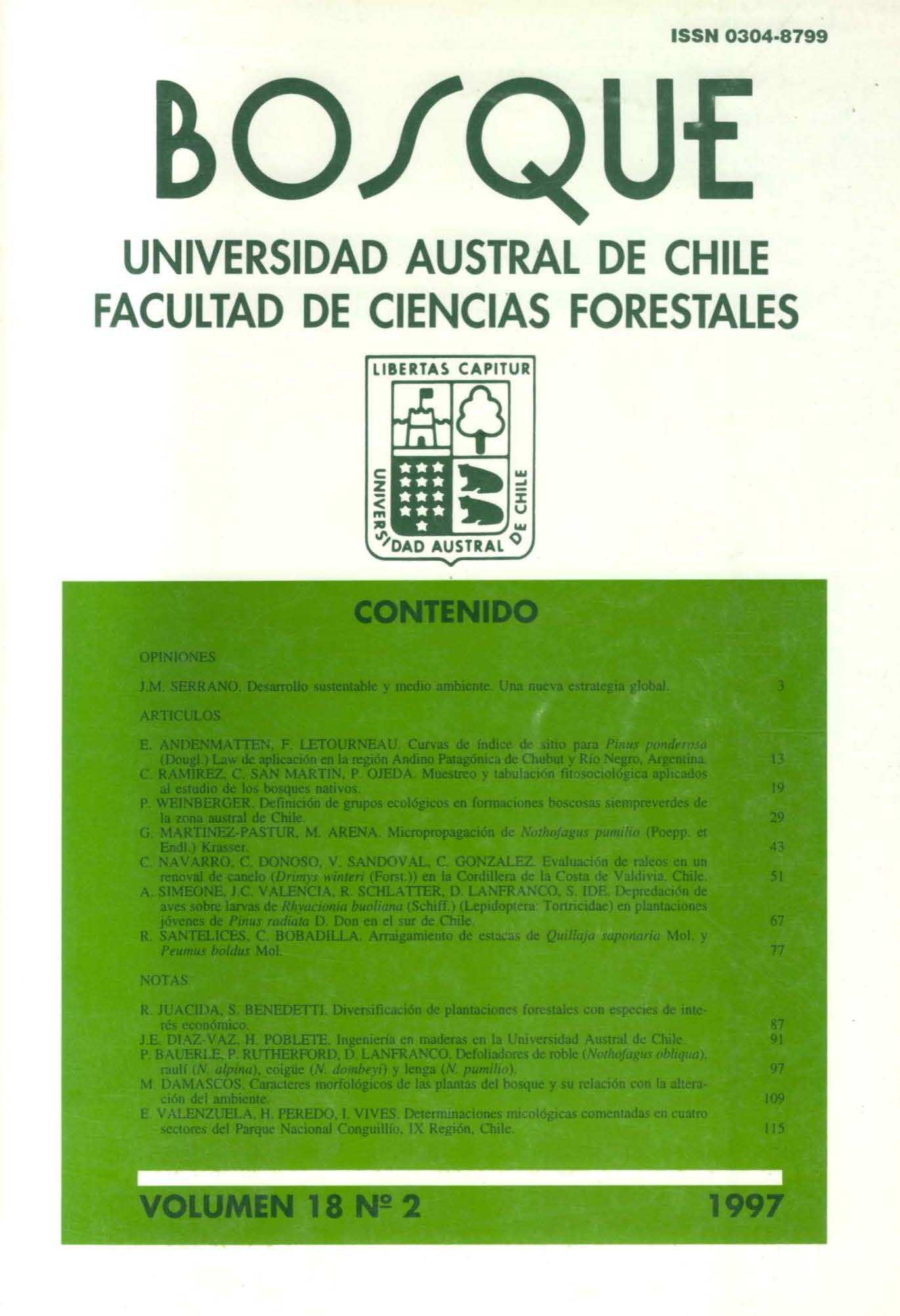Plantsociological survey and tabulation applied to native forest studies
Main Article Content
Abstract
This study presents the application of plantsociological methods to determine the minimal area and number of relevés necessary to represent the structure of a forest, the degree of importance of its species and their plantsociological affinity. The Roble-Laurel-Lingue forest (Nothofago-Perseetum linguae) of south-central Chile was used as an example. To represent the association in all its integrity, minimal area was determined as 110 m2 and the minimal number of relevés, 13. The most important species in decreasing order are: Nothofagus obliqua, Chusquea quila, Rubus constrictus, Agrostis capillaris, Luma apiculata, Persea lingue and Laurelia sempervirens. Of these, Rubus constrictus and Agrostis capillaris are indicating a high degree of anthropogenic intervention in the stands studies. Luma apiculata was the most important species. The importance of Chusquea quila indicates an opening of the canopy. The climbing Lapageria rosea, the fern Blechnum hastatum and the tree Luma apiculata presented greater affinity with Nothofagus obliqua, Nothofagus obliqua, Lapageria rosea and the climbing Cissus striata positively associated with Laurelia sempervirens. However, with Persea lingue, the association was smaller and only the association with Aristotelia chilensis stood out. Finally, the importance and limitations of the methods used and of the calculated values are discussed.

